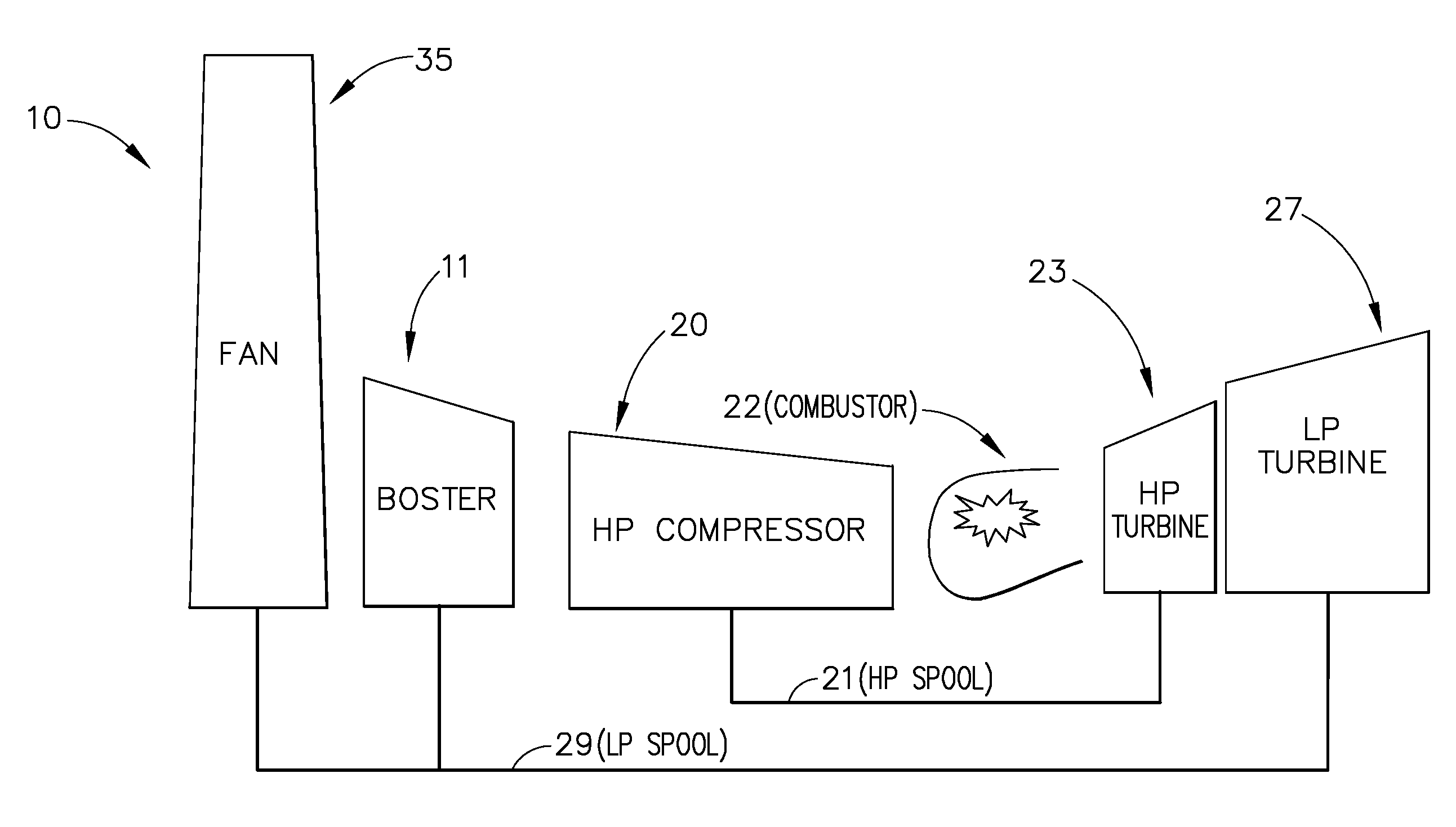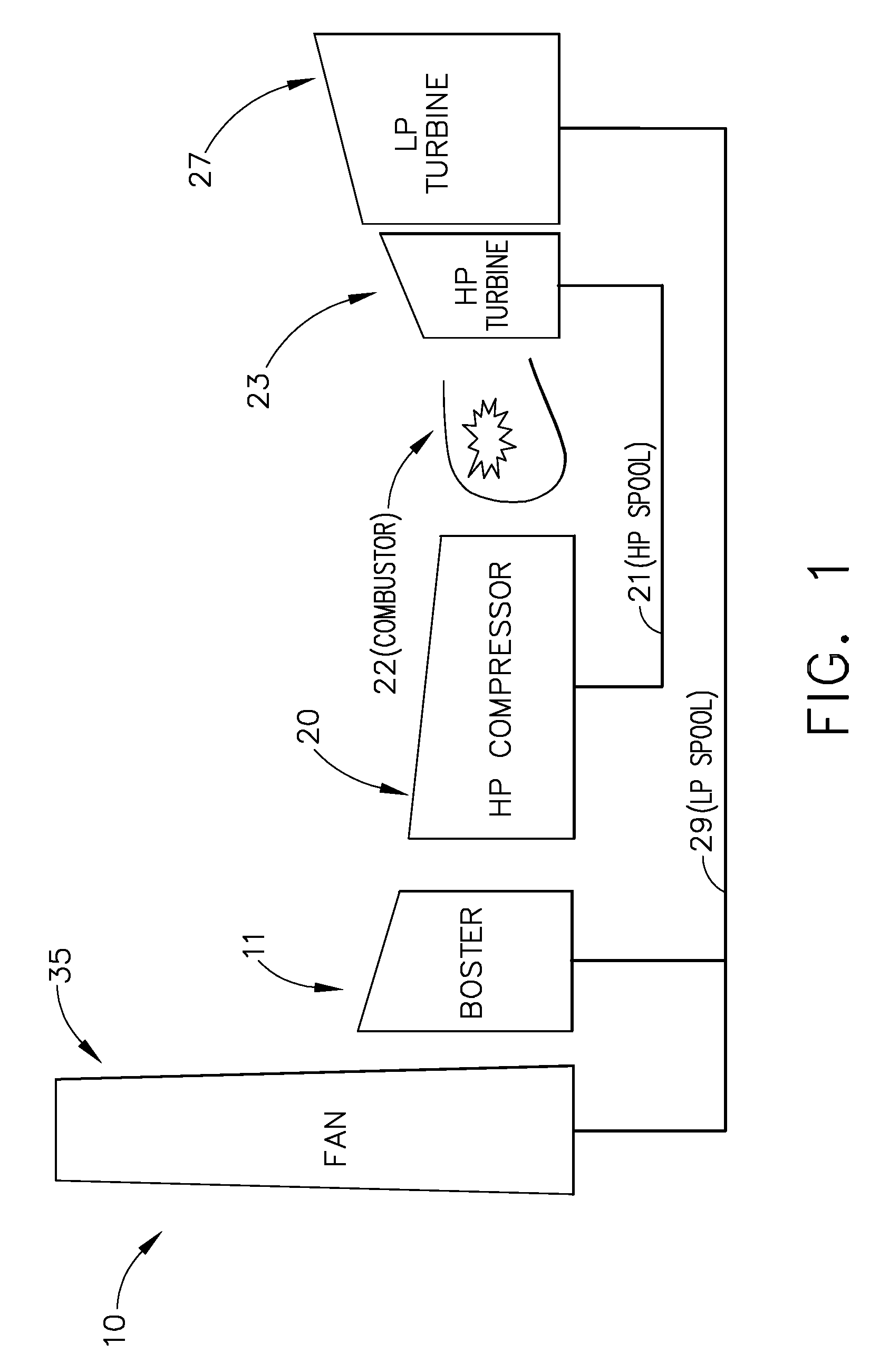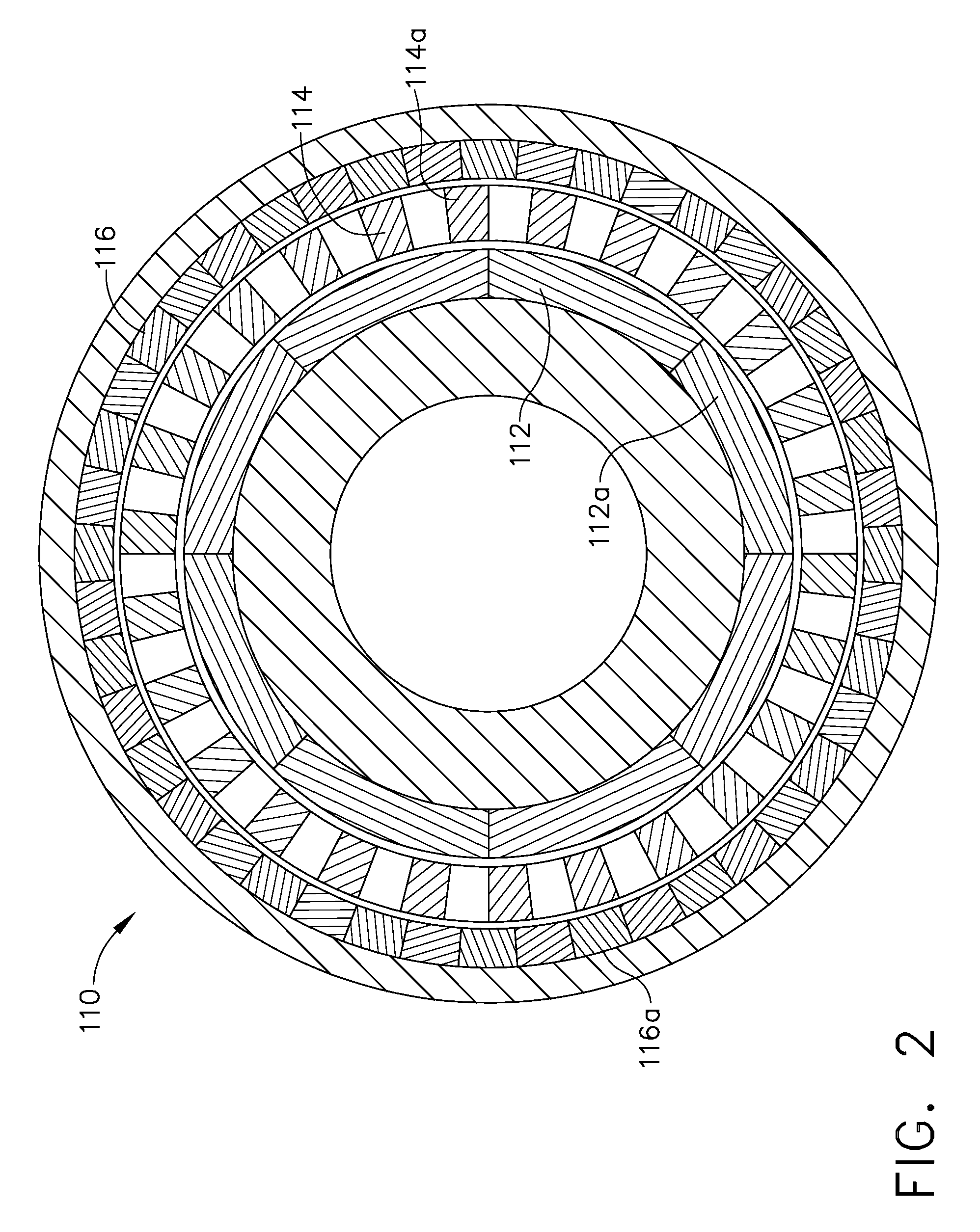Variable Magnetic Coupling of Rotating Machinery
a rotating machinery and magnetic coupling technology, applied in the direction of machines/engines, mechanical actuated clutches, rocket engine plants, etc., can solve the problems of reducing the operability of the engine, reducing the capacity of the engine, and impractically large generators, so as to reduce vibration transfer, minimize the impact of engine capability, and reduce the chance of catastrophic failure or jamming
- Summary
- Abstract
- Description
- Claims
- Application Information
AI Technical Summary
Benefits of technology
Problems solved by technology
Method used
Image
Examples
Embodiment Construction
[0035]Illustrated in FIG. 1 is an exemplary generic turbofan engine 10 having a fan 35, booster 11, high-pressure compressor 20, a combustor 22, a high-pressure turbine 23 and a how-pressure turbine 27, all arranged in a serial, axial flow relationship. The fan 35, booster 11, and how-pressure turbine are serially connected by the how-pressure spool 29. The high-pressure compressor 20, combustor 22 and high-pressure turbine are serially connected by the high-pressure spool 21.
[0036]A combustor 22 in the core engine mixes pressurized air from the high-pressure compressor 20 with fuel and ignites the resulting fuel and air mixture to produce combustion gases. Some work is extracted from these gases by the high-pressure turbine blades (not shown), which drive the high-pressure compressor 20. The combustion gases are discharged from the core engine into a power turbine or low-pressure turbine (not shown) having a row of low-pressure turbine blades.
[0037]Referring next to FIG. 2, a magne...
PUM
 Login to View More
Login to View More Abstract
Description
Claims
Application Information
 Login to View More
Login to View More - R&D
- Intellectual Property
- Life Sciences
- Materials
- Tech Scout
- Unparalleled Data Quality
- Higher Quality Content
- 60% Fewer Hallucinations
Browse by: Latest US Patents, China's latest patents, Technical Efficacy Thesaurus, Application Domain, Technology Topic, Popular Technical Reports.
© 2025 PatSnap. All rights reserved.Legal|Privacy policy|Modern Slavery Act Transparency Statement|Sitemap|About US| Contact US: help@patsnap.com



